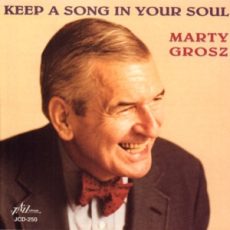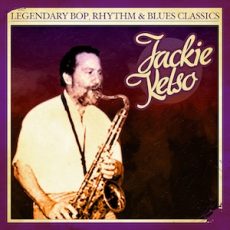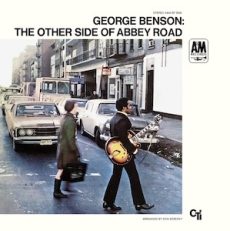
Daily Dose Of Jazz…
Martin Oliver Grosz was born on February 28, 1930 in Berlin, Germany, the son of artist George Grosz. He became resident in the United States by the age of three growing up in New York he began playing ukulele at the age of eight. A few years later he heard a record that highlighted guitarist Bernard Addison’s shuffle-beat behind Roy Eldridge’s trumpet and out went the uke and in came the banjo and guitar. He attended Columbia University and in 1950, recorded his first record with a band that included a young pianist Dick Wellstood and veteran New Orleans bassist, Pops Foster.
Settling in Chicago, Illinois in the Fifties for nearly 20 years, Marty played with among others, Albert Ammons, Floyd O’Brien, Art Hodes, and Jim Lannigan. He recorded with Dave Remington, Albert Nicholas and Hodes in the 1950s. He led sessions of his own in 1957 and 1959 for Riverside and Audio Fidelity. He gave his best effort to coax Jabbo Smith out of retirement but was pretty obscure.
Returning to New York City in 1979 he joined Bob Wilber and Kenny Davern’s Soprano Summit as a vocalist and guitarist. A round of touring ensued along with recording with Dick Wellstood’s Friends of Fats, Yank Lawson and Bob Haggar, and the New York Jazz repertory Orchestra.
In the 1980s he was a member of the Classic Jazz Quartet with Dick Wellstood. He played, sang, and wrote most of the group’s arrangements. He has also performed at concerts with Joe Pass, Herb Ellis, and Charlie Byrd.
Guitarist, banjoist, vocalist, and composer Marty Grosz has recorded thirty-one albums as a leader and thirty-four as a sideman. At 95 he still plays occasionally.
More Posts: bandleader,banjo,composer,guitar,history,instrumental,jazz,music,vocals

Daily Dose Of Jazz…
John Joseph Kelson Jr. , known professionally as Jackie Kelso, was born in Los Angeles, California on February 27, 1922. He began taking clarinet lessons at age eight, studying with Caughey Roberts. When he was fifteen his Jefferson High School classmate Chico Hamilton urged him to take up the alto saxophone, making his professional debut with Jerome Myart that same year. By the time he graduated from Jefferson, he was playing with Hamilton, Buddy Collette, and Charles Mingus at Central Avenue clubs.
The 1940s saw Jackie playing with Barney Bigard, Marshal Royal, Lucky Thompson, Kid Ory, Benny Carter, Benny Goodman, Lionel Hampton, and Roy Milton. He enlisted in the Navy in 1942 with Marshal and Ernie Royal, and, after training at Camp Robert Smalls, he was stationed with the Royals with St. Mary’s College Pre-Flight School band.
After the war he continued playing and by the 1950s he was performing with Johnny Otis, Billy Vaughan, Nelson Riddle, Bill Berry, Ray Anthony, the Capp-Pierce Juggernaut, Bob Crosby, C.L. Burke, and Duke Ellington. Joining Gene Vincent and His Blue Caps in 1958 he was featured on several recordings from that period such as Ac-centu-ate the Positive.
Working as a studio musician between 1964 and 1984, in addition Kelso recorded with Mercer Ellington and Mink DeVille, toured worldwide with Hampton, Ellington, and Vaughan, and appeared in The Concert for Bangladesh. Semi-retiring from music in 1984, he returned to perform in 1995 with the Count Basie Orchestra, where he became a regular in 1998.
Saxophonist, flautist, and clarinetist Jackie Kelso, who reverted to his birth name Kelson. died on April 28, 2012 in Beverly Hills, California, aged 90.
Get a dose of the musicians and vocalists who were members of a global society integral in the making and preservation of jazz for over a hundred and twenty-five years…
Jackie Kelso: 1922~2012 | Saxophone, Flute, Clarinet
More Posts: clarinet,flute,history,instrumental,jazz,music,saxophone

Daily Dose Of Jazz…
Ronald Thomas Verrell February 21, 1926 in Rochester, Kent, England. He initially showed little interest in music until he saw the Benny Goodman Quartet perform in the film Hollywood Hotel in 1938. From that point on he wanted to be a drummer, he taught himself how to play after only one lesson. In 1940, after the outbreak of World War II in Europe, the 14-year-old was evacuated to Porthcawl in South Wales, where he made his first public appearances drumming with local bands in the area.
Returning to Kent in 1943 he worked professionally for a while with the Claude Giddins band, before being conscripted to work as a Bevin Boy in the coal mines for the remainder of the war. Following the war Ronnie began performing with Scottish saxophonist Tommy Whittle and Belgian trumpeter Johnny Claes. Then between 1947 and 1951 he played with several big bands, including those led by Carl Barriteau and Cyril Stapleton.
In 1951 Verrell joined the Ted Heath Orchestra and remained with the band until Heath’s retirement in 1964. They toured America and became the first British big band to break into the US big band arena. His next move focused on session work where he backed Winifred Atwell, Jack Jones, Tony Bennett, Tom Jones, Shirley Bassey, Jonathan King, Petula Clark and Strawbs. He would go on to join Jack Parnell’s house band and Syd Lawrence’s band in the 80s.
Ronnie performed in several television shows, including The Muppet Show where he played drums for the show’s manic puppet drummer, Animal. He dueled Buddy Rich on the show as Animal and won after Animal smashed a snare drum over Rich’s head.
The mid-1990s had him forming his own quintet he modelled after Benny Goodman’s band. Then a serious road accident forced him to stop performing for almost a year. After his recovery he continued to play, touring with an all-star band, Best of British. His final appearance was on The Frank Skinner Show in 2001.
Drummer Ronnie Verrell died on February 22, 2002 in Kingston-upon-Thames, England from a chest infection he contracted during an operation to fix a crushed vertebra resulting from a fall down some stairs.
More Posts: bandleader,drums,history,instrumental,jazz,music

Jazz Poems
LESTER YOUNG
Sometimes he was cool like an eternal
blue flame burning in the old Kansas
City nunnery
Sometimes he was happy ‘til he’d think
about his birth place and its blood
stained clay hills and crow-filled trees
Most times he was blowin’ on the wonderful
tenor sax of his preachin’ in very cool
tones, shouting only to remind you of
a certain point in his blue messages
He was our president as well as the minister
of soul stirring Jazz, he knew what he
blew, and he did what a prez should do,
wail, wail, wail. There were many of
them to follow him and most of them were
fair–but they never spoke so eloquently
in so a far out funky air.
Our prez done died, he know’d this would come
but death has only booked him, alongside
Bird, Art Tatum, and other heavenly wailers.
Angels of Jazz–they don’t die–they live
they live–in hipsters like you and I
TED JOANS
from Jazz Poems ~ Selected and Edited by Kevin Young
More Posts: book,classic,collectible,history,jazz,library,poet

Daily Dose Of Jazz…
Bernie Glow was born on February 6, 1926 in New York, New York. During the Second World War while attending The High School of Music & Art he played in bands with Stan Getz, Tiny Khan, Shorty Rogers and George Wallington. Early on his influences were Snooky Young with the Jimmie Lunceford band, and Billy Butterfield with Benny Goodman.
At just sixteen and out of high school, Glow spent a year on the road with the Richard Himber Orchestra. Two years later he performed first with Xavier Cugat and then Raymond Scott on CBS radio. At the end of the war he played lead trumpet with the Artie Shaw band. Following that stint, he worked with Boyd Raeburn.
1949 saw the twenty-three year old retiring from the road after more than a year with Woody Herman and his famous Second Herd. Bernie worked as a trumpet player in big bands, Latin bands and dance orchestras. He performed in theaters, dance halls, night clubs and on the radio around Manhattan. This was the final preparation that launched him into the burgeoning commercial and studio scene.
During the last years of the big-band era his first-call studio work included Miles Davis, Frank Sinatra, Ella Fitzgerald and did thousands of radio and television recording sessions. Many of these studio big-band sessions were led by composer/arrangers Nelson Riddle, Quincy Jones and Oliver Nelson.
Trumpeter and sideman Bernie Glow, who played on the seminal Miles Davis and Gil Evans collaborations Miles Ahead, Porgy and Bess, Sketches of Spain, and Quiet Nights, died of a blood disorder in Manhasset, New York at the age of 56 on May 8, 1982.
More Posts: history,instrumental,jazz,music,trumpet



